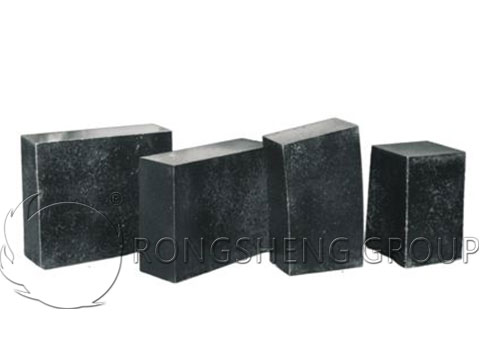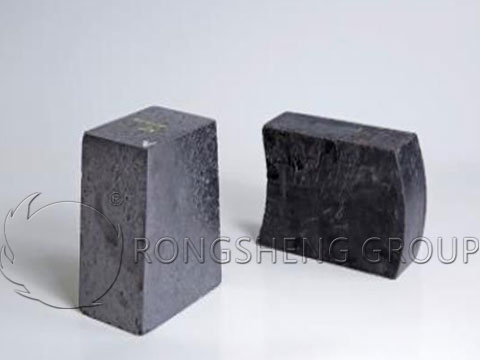The carbon content in traditional magnesia carbon bricks is relatively high, generally in the range of 10-20%. Due to the presence of carbon in magnesia-carbon bricks, the performance of magnesia-carbon bricks is greatly improved, making them superior to magnesia-chrome bricks and magnesia-dolomite bricks in certain properties. However, due to the progress of metallurgical technology and the demanding requirements for refractory materials, a series of problems have appeared in the use of traditional magnesia-carbon bricks. For example, the excellent thermal conductivity of graphite increases the heat loss in the steelmaking process and wastes energy. Too high graphite content will increase the carbon content in the molten steel during the refining process outside the furnace, affect the quality of the molten steel, and is not conducive to the reduction of the carbon content in the steel. In addition, graphite is a precious non-renewable resource, and traditional magnesia carbon bricks rely too much on graphite, which is detrimental to the sustainable use of resources.

However, simply reducing the graphite content in the magnesia carbon brick will not only reduce the thermal conductivity of the magnesia carbon brick but also increase the elastic modulus of the magnesia carbon brick, which will reduce the thermal shock stability of the material. In addition, due to the low wettability of graphite with molten steel and molten slag, if the graphite content in the magnesia carbon brick is reduced, the magnesia carbon brick will be more easily corroded by molten steel and molten slag, resulting in a decrease in the corrosion resistance of the material. Therefore, research on magnesia carbon bricks with lower graphite content and excellent thermal shock stability, and slag erosion resistance has become the focus of current research and a new direction for the future development of magnesia carbon bricks.

In order to solve these contradictions and improve the performance of low-carbon magnesia-carbon bricks, we can start with improving the carbon structure of the combined carbon, optimizing the matrix, and using high-efficiency antioxidants. The specific improvement measures are as follows.
(1) Modified magnesia particles
In order to solve the poor thermal exfoliation of low-carbon magnesia-carbon bricks, a thin asphalt coating is prepared on the surface of the magnesia particles to reduce the thermal expansion of the magnesia particles during use. In this way, the thermal shock stability of low-carbon magnesia-carbon bricks can be improved.
(2) Change the type of carbon source and the particle size of graphite
By adding a small amount of carbon black (carbon black is a mixture of single spherical carbon black and polymeric carbon black), magnesia carbon bricks show outstanding excellent properties, such as reduction of elastic modulus, and relaxation of thermal stress between different particles. Improve the thermal shock stability and corrosion resistance of low-carbon magnesia-carbon bricks.
A small amount of nano-sized carbon is added to make the new magnesia carbon brick with a carbon content of about half of the ordinary magnesia carbon brick still have excellent performance. Adding different amounts of nano-sized carbon has different effects on performance. The practice has proved that adding 0.9wt% of nano-sized carbon and 3wt% of graphite as a mixed carbon source makes the material have the best performance.
(3) Modified binder
The magnesia-carbon bricks after adding the nano-sized matrix, on the one hand, reduce the carbon content and at the same time ensure the thermal shock stability of the material, on the other hand, reduce the heat loss of the converter. The composite bonding agent increases the degree of graphitization after carbonization of the bonding agent, forms micropores in the matrix, and improves the mechanical properties of the magnesia carbon brick at room temperature, high temperature, and other mechanical properties.
(4) Highly effective antioxidants
Low-carbon magnesia-carbon bricks with special additives have the same thermal shock stability as traditional magnesia-carbon bricks.
To purchase high-quality magnesia-carbon bricks and low-carbon magnesia-carbon bricks, please contact refractory manufacturers.

